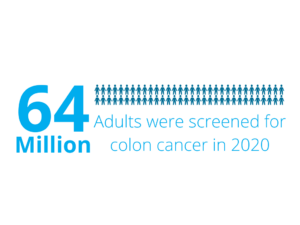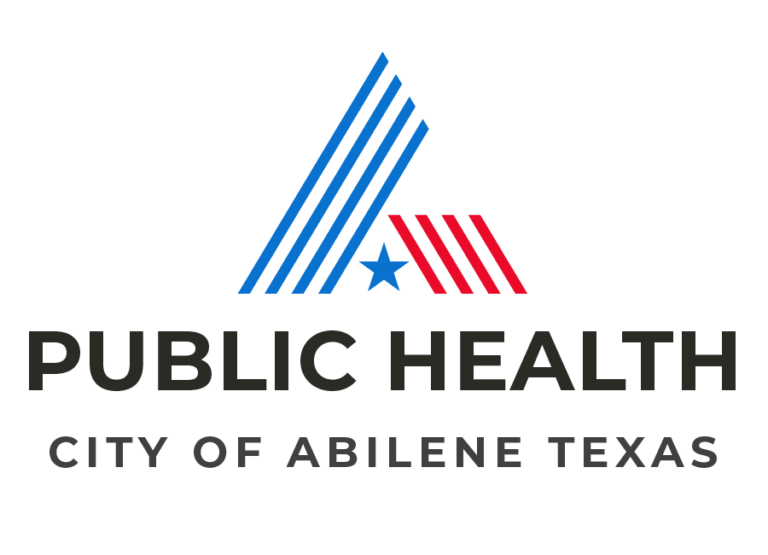
Community Data
Preventive Health Services
Quick Facts:
- Only 1 in 4 US adults between the ages of 50 and 64 use preventive services.
- Less than 40% of adults over the age of 65 in the US use preventive services.
Why are Preventive Services Important?
Taking part in preventive services can help to prevent disease or detect disease in the early stages, when treatment is the most effective. The core set of recommended preventive services for women are screening for breast cancer, colorectal cancers, recent flu vaccination, and vaccination against pneumococcal disease. The core set of recommended preventive services for men are screening for colorectal cancer, recent flu vaccination, and vaccination against pneumococcal disease. According to the Centers for Disease Control and Prevention, the cost of these preventive services are paid for by Medicare and Medicaid, and by most other insurance plans.


Preventive Services in Our Community
Darker colors on the interactive maps indicate a larger number of individuals who use preventive screenings.
In 2019, approximately 1 in 4 adult women over the age of 65 used clinical preventive services. The Taylor County zip codes with the highest percentage of women over the age of 65 who used clinical preventive services were 79508 (28.8%), 79562 (27.8%), 79566 (27.2%), and 79530 (26.8%). The Taylor County zip codes with the lowest percentage of women over the age of 65 who used preventive services were 79603 (20.4%), and 79601 (21.5%).
Among men in 2019, about 1 in 4 over the age of 65 in Taylor County used clinical preventive services. The Taylor County zip codes with the highest percentage of men over the age of 65 who used clinical preventive services were 79508 (30.7%), 79541 (30.1%), and 79606 and 79562 (30.0%). The zip codes in Taylor County with the lowest percentage of men over the age of 65 who used preventive services were 79603 (22.7%), and 79601 and 79563 (24.6%).
Community Data
Routine Checkups
Quick Facts:
- In 2015, about ⅔ of Texas adults over the age of 18 visited a doctor for a routine checkup in the previous 12 months.
- In 2018, over 72% of Taylor county adults over the age of 18 visited a doctor for a routine checkup.
Why are Routine Checkups Important?
Routine checkups, sometimes called preventive healthcare or “physicals”, are important to receive on a regular basis. These visits allow for time to receive recommended vaccines, check blood pressure and cholesterol, and prevent and identify new health conditions. When these routine checkups are completed over time, they can help to reduce morbidity and mortality from chronic diseases and improve the overall well-being of a person.
Routine Checkups in Our Community
Darker colors on the interactive maps indicate better outcomes.
In 2018, approximately 72.6% of Taylor County residents over the age of 18 visited a doctor within the previous year for a routine checkup. The percentage of adults who visited a doctor for a routine checkup in 2019 remained about the same at about 72.5% of Taylor County adults over the age of 18. The Taylor county zip codes with the highest percentage of residents who visited a doctor for a routine checkup were 79566 (79.2%) and 79530 (76.4%). The zip codes with the lowest percentage of residents who visited the doctor for a routine checkup were 79607 64.1%) and 79601 (69.9%).
Community Data
High Cholesterol Screening
Quick Facts:
- About 2 out of every 3 Americans say that their cholesterol levels have been checked within the past 5 years.
- In 2019, 85.9% of Texas adults reported having their cholesterol screened within 5 years, whereas 86.6% of U.S. adults had a cholesterol screen in the past 5 years as of 2019.
High Cholesterol Screenings
Your primary care physician can do a simple blood test to measure cholesterol levels. Cholesterol screenings are recommended for healthy adults every 4-6 years. For those with additional chronic illnesses such as high blood pressure and diabetes, high cholesterol screenings will be done more often. A conversation with a primary care physician will assess risk, and determine how often cholesterol screening should be completed.
High Cholesterol Screenings in Our Community
Darker colors on the interactive maps indicate better outcomes.
In 2017, approximately 82.7% of Taylor County residents had been screened for high cholesterol levels within the previous 5 years. This estimated percentage decreased slightly by 2019 to approximately 82.0%.
Among Taylor County zip codes in 2019, there were 6 zip codes where about 9 out of every 10 residents had been screened for high cholesterol within the past 5 years. Most of these zip codes were at the southernmost part of Taylor County and were 79566 (94.0%), 79541 and 79530 (92.1%), 79508 (91.9%), and 79562 (91.3%). The 6th zip code with a high percentage of cholesterol screening among residents was at the northwestern end of Taylor County and was the zip code of 79561 (89.8%). The zip code with the lowest percentage of adults who had been screened for high cholesterol was 79699 (70.9%) and 79607 (76.6%).
Community Data
Colon Cancer Screening
Quick Facts:
- Colorectal cancer is the 2nd leading cancer killer.
- Current screening recommendations are that adults between the ages of 45 and 75 should be screened for colon cancer.
- About 70% of adults between the ages of 50 and 75 in the US are up-to-date with colon cancer screening.
Why are Colon Cancer Screenings Important?
Colon cancer, sometimes called colorectal cancer, is a type of cancer where cells in the large intestine or rectum grow out of control. Sometimes a polyp, an abnormal growth that can turn into cancer over time, will form in the colon or rectum. Colon cancer screenings can help to find polyps and early-stage colon cancer so that they can be treated early.
Colon Cancer Screenings in Our Community
Darker colors on the interactive maps indicate better outcomes.
In 2018, about 61.5% of Taylor County adults between the ages of 50 and 75 were screened for colon cancer. The zip codes in Taylor County with the highest percentage of adults between the ages of 50 and 75 who had been screened for colon cancer in 2019 were 79508 (67.6%), 79541 (66.2%), and 79562 (65.6%). The Taylor County zip codes with the lowest percentage of adults between 50 and 75 years old who had been screened for colon cancer were 79603 (55.3%), 79607 (55.8%), and 79601 (57.3%).



Community Data
Cervical Cancer Screening
Quick Facts:
- In 2018, 80.5% of women in the U.S. between the ages of 21 and 65 had a cervical cancer screening.
- In 2018, 76.7% of women in Texas between the ages of 21 and 65 had a pap smear within the last 3 years.

Why is cervical cancer screening important?
Cervical cancer most often occurs in women who are over the age of 30. The most common cause of cervical cancer is from a long-lasting infection with certain strains of a virus called human papillomavirus (HPV) that is passed from one person to another during sex. Screening tests, like Pap smears, and the HPV vaccine can help to prevent cervical cancer or find cervical cancer in its early stages when it is most treatable. Depending on your age, medical history and previous test results, you may not need cervical cancer screening every year. Speak to your doctor about what testing options and frequency are best for you.
Cervical Cancer Screening in Our Community:
Darker colors on the interactive maps indicate better outcomes.
In 2018, just over 80% of women between the ages of 21 and 65 in Taylor County reported having a cervical cancer screening test, such as a Pap smear. The zip codes with the highest percentage of women between the ages of 21 and 65 who had a cervical cancer screening test were 79530 (86.3%) and 79562 (86.1%). Other zip codes in Taylor County with high rates of cervical cancer screening in 2018 included 79508 and 79541. All of these zip codes were in the southeastern part of the county. The zip codes with the lowest rates of cervical cancer screening were 79601 (76.6%) and 79607 (77.6%).
Community Data
Mammogram Use
Quick Facts:
- Breast cancer is the 2nd most common cancer in women.
- Two-thirds of women over the age of 40 in the United States have had a mammogram within the past 2 years.
- In the US in 2018, nearly 73% of women between the ages of 50 and 74 had a mammogram within the past 2 years.



What is a Mammogram and Why is it Important?
A mammogram is an x-ray of the breast that is used by physicians to look for signs of breast cancer. A mammogram is an important part of breast cancer screening. It is recommended that women who are between the ages of 50 and 74 years old get a mammogram every 2 years if they are at an average risk for breast cancer. Women who are between the ages of 40 and 49 should talk to their doctor about when to start getting mammograms and how often they should get one. Mammograms don’t prevent breast cancer, but they can help detect breast cancer at an early stage when it is easier to treat. Talk to your doctor or health provider to discuss which screening tests are right for you and for any health concerns you may have.
Mammogram Use in Our Community
Darker colors on the maps indicate better outcomes.
In Taylor County in 2018, approximately 70% of women between the ages of 50 and 74 had a mammogram within the previous 2 years. This is below the percentage of US women (73%) who had a mammogram within the previous 2 years. Counties on the map with a much higher percentage of women between 50 and 74 who had a recent mammogram in 2018 had large metropolitan areas, such as Dallas, Fort Worth, Austin, and Houston. The Taylor County zip code with the lowest percentage of women who had a recent mammogram in 2018 was 79566. In this zip code, 71.5% of women between the ages of 50 and 74 reported having a mammogram within the previous 2 years. The zip code with the highest percentage of women reporting a recent mammogram was 79541, with 75.4% of women reporting a mammogram within 2 years prior to 2018.
Click for Data Sources
Preventive Health Services
- National Center for Chronic Disease Prevention and Health Promotion. (2011, September 7). Clinical Preventive Services. Accessed June 29, 2022 from https://www.cdc.gov/aging/data/clinical.htm
- CDC, National Center for Chronic Disease Prevention and Health Promotion, Division of Population Health. PLACES: County Data (GIS Friendly), 2021 release. https://chronicdata.cdc.gov/500-Cities-Places/PLACES-County-Data-GIS-Friendly-Format-2021-releas/i46a-9kgh
- CDC, National Center for Chronic Disease Prevention and Health Promotion, Division of Population Health. PLACES: ZCTA Data (GIS Friendly), 2021 release. https://chronicdata.cdc.gov/500-Cities-Places/PLACES-ZCTA-Data-GIS-Friendly-Format-2021-release/kee5-23sr
- CDC, National Center for Chronic Disease Prevention and Health Promotion, Division of Population Health. PLACES: County Data (GIS Friendly), 2021 release. https://chronicdata.cdc.gov/500-Cities-Places/PLACES-County-Data-GIS-Friendly-Format-2021-releas/i46a-9kgh
- CDC, National Center for Chronic Disease Prevention and Health Promotion, Division of Population Health. PLACES: ZCTA Data (GIS Friendly), 2021 release. https://chronicdata.cdc.gov/500-Cities-Places/PLACES-ZCTA-Data-GIS-Friendly-Format-2021-release/kee5-23sr
Routine Checkup
- Pickens CM, Pierannunzi C, Garvin W, Town M. Surveillance for certain health behaviors and conditions among states and selected local areas – behavioral risk factor surveillance system, United States, 2015. MMWR Surveill Summ 2018; 67(9): 1-90. doi:10.15585/mmwr.ss6709a1. https://www.cdc.gov/mmwr/volumes/67/ss/pdfs/ss6709a1-H.pdf
- Centers for Disease Control and Prevention. (2020, December 8). Prevention Measure Definitions. PLACES: Local Data for Better Health. Accessed June 21, 2020 from https://www.cdc.gov/places/measure-definitions/prevention/index.html#visits-doctor
- CDC, National Center for Chronic Disease Prevention and Health Promotion, Division of Population Health. PLACES: County Data (GIS Friendly), 2021 release. https://chronicdata.cdc.gov/500-Cities-Places/PLACES-County-Data-GIS-Friendly-Format-2021-releas/i46a-9kgh
- CDC, National Center for Chronic Disease Prevention and Health Promotion, Division of Population Health. PLACES: County Data (GIS Friendly), 2020 release. https://chronicdata.cdc.gov/500-Cities-Places/PLACES-County-Data-GIS-Friendly-Format-2020-releas/mssc-ksj7
- CDC, National Center for Chronic Disease Prevention and Health Promotion, Division of Population Health. PLACES: ZCTA Data (GIS Friendly), 2021 release. https://chronicdata.cdc.gov/500-Cities-Places/PLACES-ZCTA-Data-GIS-Friendly-Format-2021-release/kee5-23sr
Cholesterol Screening
- Centers for Disease Control and Prevention. (2020, September 8). Getting Your Cholesterol Checked. Centers for Disease Control and Prevention. Accessed May 5, 2022 from https://www.cdc.gov/cholesterol/cholesterol_screening.htm
- Texas Department of State Health Services. Texas Health Data – Behavioral Risk Factor Surveillance System (BRFSS). Texas.gov. Accessed May 10, 2022 from https://healthdata.dshs.texas.gov/dashboard/surveys-and-profiles/brfss
- Centers for Disease Control and Prevention. BRFSS Prevalence & Trends Data. Nccd.cdc.gov. Accessed May 10, 2022 from https://www.cdc.gov/brfss/brfssprevalence/index.html
- CDC, National Center for Chronic Disease Prevention and Health Promotion, Division of Population Health. PLACES: County Data (GIS Friendly), 2021 release. https://chronicdata.cdc.gov/500-Cities-Places/PLACES-County-Data-GIS-Friendly-Format-2021-releas/i46a-9kgh
- CDC, National Center for Chronic Disease Prevention and Health Promotion, Division of Population Health. PLACES: County Data (GIS Friendly), 2020 release. https://chronicdata.cdc.gov/500-Cities-Places/PLACES-County-Data-GIS-Friendly-Format-2020-releas/mssc-ksj7
- CDC, National Center for Chronic Disease Prevention and Health Promotion, Division of Population Health. PLACES: ZCTA Data (GIS Friendly), 2021 release. https://chronicdata.cdc.gov/500-Cities-Places/PLACES-ZCTA-Data-GIS-Friendly-Format-2021-release/kee5-23sr
Colon Cancer Screening
- Division of Cancer Prevention and Control. (2022, February 17). What Should I Know About Screening? Centers for Disease Control and Prevention. Accessed June 29, 2022 from https://www.cdc.gov/cancer/colorectal/basic_info/screening/index.htm
- Division of Cancer Prevention and Control. (2022, February 17). What Is Colorectal Cancer? Centers for Disease Control and Prevention. Accessed June 30, 2022 from https://www.cdc.gov/cancer/colorectal/basic_info/what-is-colorectal-cancer.htm
- Texas Cancer Registry. (2021, February). Age-Adjusted Invasive Cancer Incidence Rates in Texas: Colon & Rectum, 2014-2018. Texas Department of State Health Services. Accessed June 30, 2022 from https://www.cancer-rates.info/tx/
- National Comprehensive Cancer Control Program (NCCCP). (2022, June 21). Colorectal Cancer Screening Test Use in Texas. Centers for Disease Control and Prevention. Accessed June 30, 2022 from https://www.cdc.gov/cancer/ncccp/screening-test-use/
- Division of Cancer Prevention and Control. (2021, November 3). Use of Colorectal Cancer Screening Tests. Centers for Disease Control and Prevention. Accessed June 30, 2022 from https://www.cdc.gov/cancer/colorectal/statistics/use-screening-tests-BRFSS.htm
- CDC, National Center for Chronic Disease Prevention and Health Promotion, Division of Population Health. PLACES: County Data (GIS Friendly), 2021 release. https://chronicdata.cdc.gov/500-Cities-Places/PLACES-County-Data-GIS-Friendly-Format-2021-releas/i46a-9kgh
- CDC, National Center for Chronic Disease Prevention and Health Promotion, Division of Population Health. PLACES: County Data (GIS Friendly), 2020 release. https://chronicdata.cdc.gov/500-Cities-Places/PLACES-County-Data-GIS-Friendly-Format-2020-releas/mssc-ksj7
- CDC, National Center for Chronic Disease Prevention and Health Promotion, Division of Population Health. PLACES: ZCTA Data (GIS Friendly), 2021 release. https://chronicdata.cdc.gov/500-Cities-Places/PLACES-ZCTA-Data-GIS-Friendly-Format-2021-release/kee5-23sr
Cervical Cancer Screening
- National Center for Health Statistics. Health, United States, 2019: Table 034. Hyattsville, MD. 2021. Available from: https://www.cdc.gov/nchs/hus/contents2019.htm.
- Centers for Disease Control and Prevention. (2021, December 14). Basic Information About Cervical Cancer. Centers for Disease Control and Prevention. Accessed June 21, 2022 from https://www.cdc.gov/cancer/cervical/basic_info/
- Centers for Disease Control and Prevention. (2021, December 14). What Should I Know About Screening? Centers for Disease Control and Prevention. Accessed June 21, 2022 from https://www.cdc.gov/cancer/cervical/basic_info/screening.htm
- CDC, National Center for Chronic Disease Prevention and Health Promotion, Division of Population Health. PLACES: County Data (GIS Friendly), 2021 release. https://chronicdata.cdc.gov/500-Cities-Places/PLACES-County-Data-GIS-Friendly-Format-2021-releas/i46a-9kgh
- CDC, National Center for Chronic Disease Prevention and Health Promotion, Division of Population Health. PLACES: County Data (GIS Friendly), 2020 release. https://chronicdata.cdc.gov/500-Cities-Places/PLACES-County-Data-GIS-Friendly-Format-2020-releas/mssc-ksj7
- CDC, National Center for Chronic Disease Prevention and Health Promotion, Division of Population Health. PLACES: ZCTA Data (GIS Friendly), 2021 release. https://chronicdata.cdc.gov/500-Cities-Places/PLACES-ZCTA-Data-GIS-Friendly-Format-2021-release/kee5-23sr
Mammogram Use
- Centers for Disease Control and Prevention. (2021, September 20). What is a Mammogram? Centers for Disease Control and Prevention. Accessed May 26, 2022 from https://www.cdc.gov/cancer/breast/basic_info/mammograms.htm
- Centers for Disease Control and Prevention. (2021, September 20). What is Breast Cancer Screening? Centers for Disease Control and Prevention. Accessed May 26, 2022 from https://www.cdc.gov/cancer/breast/basic_info/screening.htm
- National Center for Health Statistics. Health, United States, 2019: Table 33. Hyattsville, MD. 2021. Accessed May 27, 2022 from https://www.cdc.gov/nchs/hus/contents2019.htm.
- CDC, National Center for Chronic Disease Prevention and Health Promotion, Division of Population Health. PLACES: County Data (GIS Friendly), 2021 release. https://chronicdata.cdc.gov/500-Cities-Places/PLACES-County-Data-GIS-Friendly-Format-2021-releas/i46a-9kgh
- CDC, National Center for Chronic Disease Prevention and Health Promotion, Division of Population Health. PLACES: ZCTA Data (GIS Friendly), 2021 release. https://chronicdata.cdc.gov/500-Cities-Places/PLACES-ZCTA-Data-GIS-Friendly-Format-2021-release/kee5-23sr


